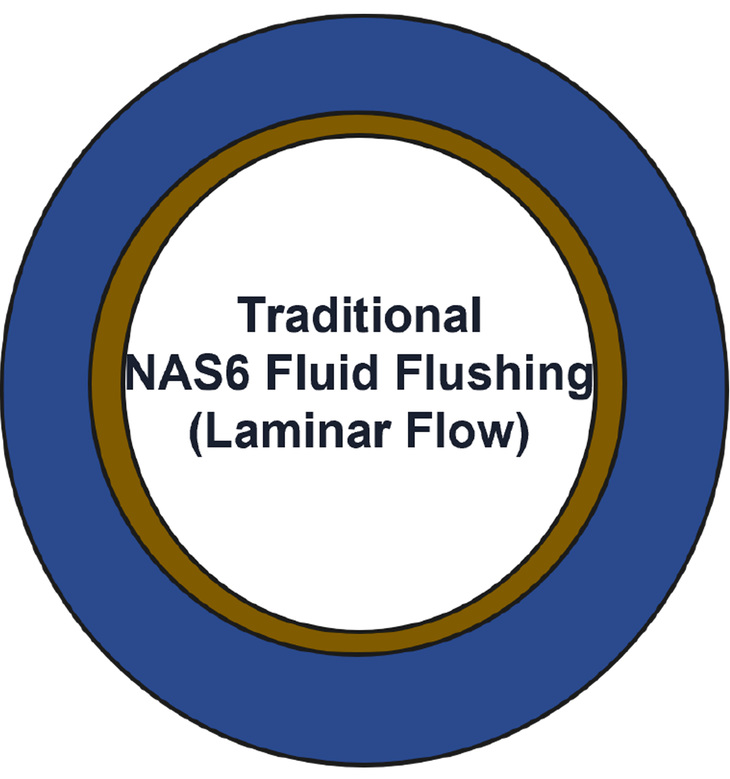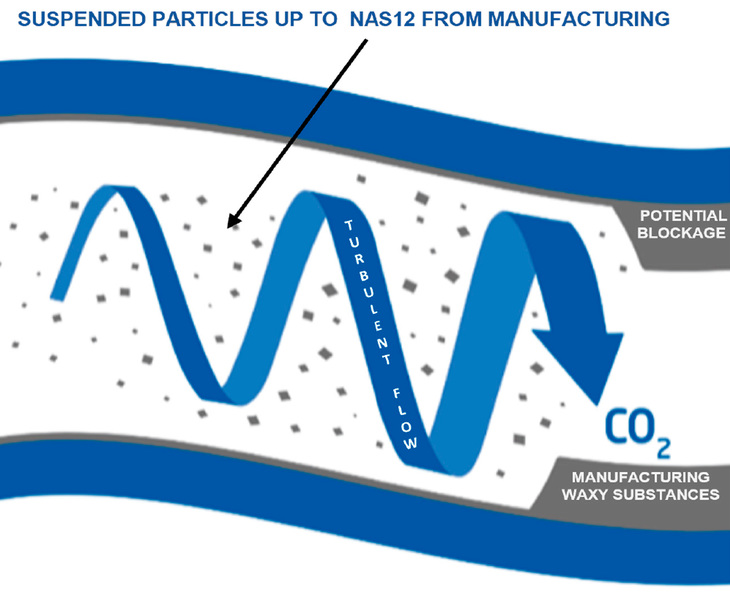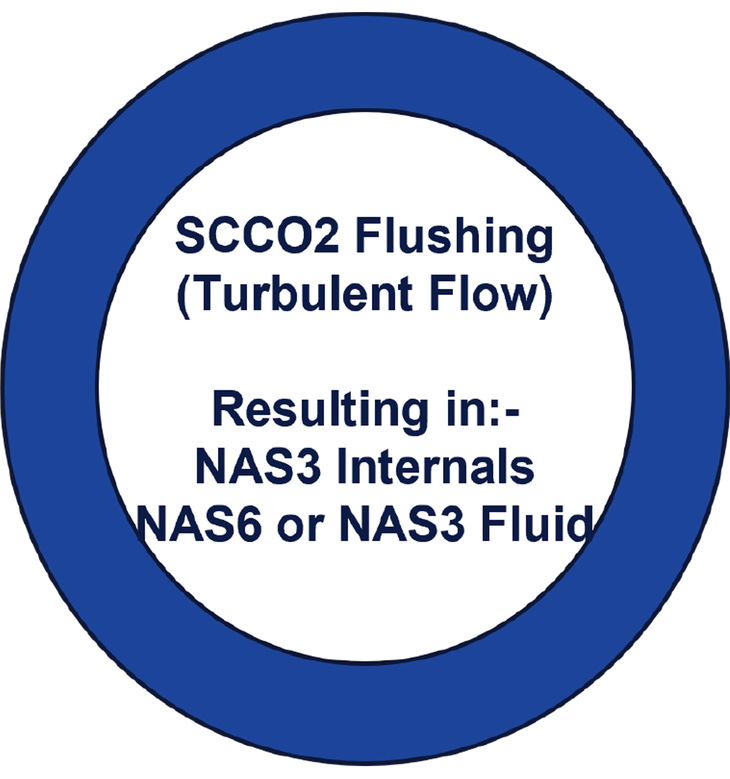The Challenge:
Production losses due to Control Line Blockages
As identified by Shell UK, historical recording of Control Line (TRSSSV, Chemical Injection & Umbilical’s) flushing only records the fluid cleanliness and not the system as NAS6 which was correct using laminar flow techniques.
With numerous trials flushing TRSSSV control lines using SCCO2 it has been established that the control line conduits are still between NAS10 or NAS12 with manufacturing wax and debris bounded to the internal wall. Laminar flow techniques could not remove the bounded debris and only removed the suspended particles in the fluid. With temperature and pressure cycling during the life cycle of the well, this would result in the system becoming blocked and inoperable.

The grey circle indicating bounded particles up to NAS 12 from manufacturing
The Solution:
Supercritical CO2 Flushing
Proprietary IKM Ocean Team Scandinavia A/S Supercritical CO2 (SCCO2) Turbulent flow removes the bounded debris from the conduit to efficiently deliver NAS3 Cleanliness prior to fluid purging to NAS6 or better fluids.
NOTE:- SCCO2 can also be used for Blockage Remediation in existing operations successfully recovering samples of the blockage to help determine the root cause and propose a forward plan.

Manufacturing waxy substances are bounded particles up to NAS 12
The Result:
Reduced risk of Production Losses due to Blockages
Shell has published a Control Line Fluid Cleanliness Best Practice document that implements the SCCO2 Technology prior to fluid purging and flushing to NAS6 or better. This document states that SCCO2 flushing results in a much higher standard of control line cleanliness for multiple downhole applications resulting in a higher quality of control systems.
This proactive approach helps provide a higher standard of reliability increasing the lift cycle of the well. To date, 22 control line conduits flushed using SCCO2, one in ten control lines have recovered manufacturing debris of major concern. This ratio of one in ten also aligns with OGA/OGUK reported wells shut in due to TRSSSV failure.

Cleanlines level of system reaches down to NAS 3